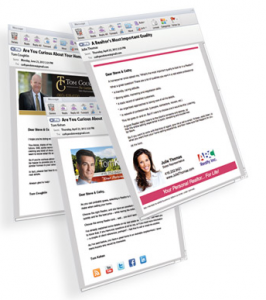 “Marketing copy” is key to your overall real estate marketing plan. It’s the most important element of your website, e-mails, letters, ads, and other sales materials. The words you choose speak to your real estate leads and clients – on your behalf – when you’re not there to do it in person.
“Marketing copy” is key to your overall real estate marketing plan. It’s the most important element of your website, e-mails, letters, ads, and other sales materials. The words you choose speak to your real estate leads and clients – on your behalf – when you’re not there to do it in person.
Copywriting is a big topic in the real estate marketing world. There are entire books devoted to the subject. But the basics are relatively straightforward.
Copywriting tips for compelling real estate marketing communications:
1. Use Y words. One of the hallmarks of poor real estate marketing copy is the excessive use of “We” and “I.” Don’t just talk about yourself. Talk about what you can do for the lead. To accomplish that, you’ll need to use plenty of Y words like “You” and “Your.”
2. Use headlines and subheads. Most people will scan your real estate marketing piece, rather than read it word-for-word. So be sure your key messages come through in the headlines and subheads.
3. Write from the client’s point of view. What’s in it for them? What problems do your services solve?
4. Be unique. Emphasize one thing about your service that distinguishes you. How do you stand out in a crowd of look-alikes?
5. Be specific. A general statement like “I offer outstanding service” won’t have a lot of impact. But a more specific statement like, “32 satisfied clients this year… and still counting,” will.
6. Prove it. People are naturally skeptical of marketing messages. So back up your claims with supporting evidence, such as your years in business, track record, statistics, etc.
7. Use testimonials. Real estate leads expect you to be biased. But they will trust their fellow home buyers and sellers to tell it like it is.
8. No hype please. Exaggerated claims will blow your credibility.
Takeaway point: Use these essential real estate copywriting tips to write better letters, e-mails, web pages and ads. Note that good real estate contact management systems, such as IXACT Contact, will come with marketing collateral created for you, such as email and letter templates, a monthly real estate newsletter, and drip marketing plans.